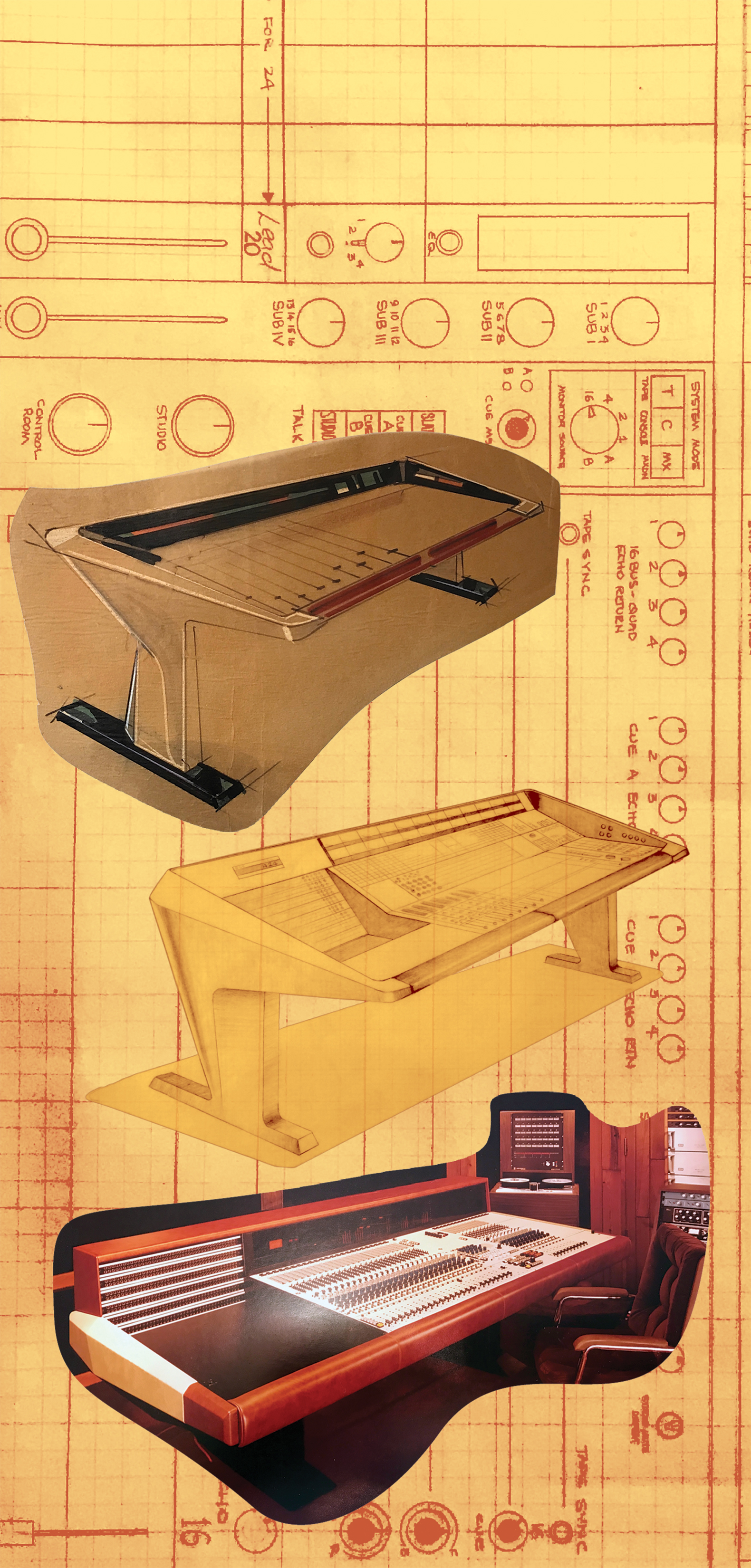Sphere Recording Consoles may not be the most recognized name in pro audio, but to those in the know, Sphere represents the holy grail of mixing consoles. [See Wally Wilson's article on Sphere Electronics this issue.] Sphere Recording consoles emerged in the late 1960's as an outgrowth of the legendary Electrodyne and Quad Eight console manufacturers, whose designers and contributors include Dean Jensen, Ed Reichenbach, Jim Hall, Chuck Broneer, and Don McLaughlin. Electrodyne and Quad Eight consoles grew out of the audio technologies developed for the U.S. motion picture industry of the 1940s, and Electrodyne may be credited with designing the standard console channel strip layout, combining a preamp section, equalizer, and output routing section. Quad Eight sold modified and rebranded Electrodyne consoles, and eventually those designs were transferred to a new company called Sphere. Sphere Electronics created a new line of consoles that utilized updated Jim Hall op-amps and Reichenbach transformers for improved preamp and equalizer performance.
During the 1970s, Sphere manufactured over 50 custom mixing consoles for many top studios, musicians, and even the White House. Perhaps 25 complete Sphere consoles remain in use in recording studios throughout Nashville, Memphis, and around the world. The unique Sphere 910 and 920 paragraphic equalizer modules have become highly sought after by both mastering and mixing engineers. Users of the Sphere consoles say the consoles rival the Neve 8068 in sound, and fall somewhere between the warmth and sweetness of the Neve and the clarity of an API. Electrodyne, Quad Eight, and Sphere defined the layout, operation, and electronics of the classic recording console.
Sphere, now based in Nashville and owned by Duncan Rowe (former Primal Gear owner), has recently started manufacturing new preamps based on the original-spec Jim Hall op-amps and Reichenbach transformers. These mic pres are available as a 4-channel, one rack-space unit and a single channel 500 Series module. The Fab Four is their single-rack-space, 4-channel preamp with a black faceplate and minimal controls for each channel. Each channel has a gain knob, switches for phantom power, polarity, and a -15 dB or -30 dB pad. The rear of the unit simply contains one XLR input and one output for each channel, along with a standard IEC power connection. The Fab Four chassis has vents on the top of the chassis, indicating that it would probably be wise to leave some space above it in a rack.
Duncan lent me the 4-channel Fab Four preamp for use during some of my sessions so that I could check out the Sphere sound. I was fortunate enough to have the preamp for use while producing a Latin jazz record for the Rhymoi Music label, and was able to put the unit to work on a variety of instruments. I recorded a lot of acoustic guitar with a variety of microphones, including a pair of vintage Neumann U 67s, some Neumann KM 84s, and an Ehrlund EHR-E. I was able to compare the Fab Four directly to NRG Recording's Neve 1078 with 1073 modules, an API 1608 [Tape Op #81], and Focusrite ISA 215 preamps. On acoustic guitar, the Sphere preamps sounded wonderful - transparent and detailed, but still very solid. The Neve sounded a bit denser than the Fab Four, maybe even slightly compressed, while the API was a bit more present but with a slight metallic resonance in the hi-mids. The Focusrite was even-toned but a bit less present than the others. Even with low output mics, like the Ehrlund EHR-E, and the gain cranked all the up way on the Fab Four, the tone and low noise remained consistent - that is to say, the preamps are extremely well balanced at all gain levels. While my Chandler Little Devil [Tape Op #88] preamp, with its wide tonal range, has become my go-to preamp for acoustic guitars, I would easily put the Fab Four as a top consideration for acoustic guitar duties.
On a drum kit, with a Royer SF-24 as a stereo room mic, the Sphere preamps sounded powerful, solid, and very well balanced. The overall sound was about as real as you could hope for. An API preamp may provide a bit more upper mid excitement, but the Sphere sounded very familiar and three dimensional. On female lead vocals, with a Klaus Heyne modified U 67, the Sphere sounded in-between the Neve 1073 and Focusrite ISA 215. The low end was smooth and clear, like the ISA, and top end was a slightly smoothed as on the 1073. The 1073 perhaps had a bit more high sheen but lost a little low-end focus. I find with ISA preamps that vocals often need a slight boost around 10 or 11 kHz, but I didn't feel that was the case with the Fab Four. The vocal sound of the Fab Four reminded me of the GML 8300's character - thick, natural, and interesting.
I never found a need for the -30 dB pad, even for drums, but that pad does open the opportunity to use the Fab Four as a line driver or makeup gain in an analog summing setup. A Shure Beta 52 on kick didn't overload the preamp even without the -15 dB pad engaged. When using the Fab Four after an A-Designs Audio REDDI [Tape Op #53] on bass, I could actually open up the REDDI's output a bit more than usual and still get clean gain through the Fab Four. I often feel that the REDDI through most console preamps runs on the edge of overload, but the REDDI into the Fab Four provided a solid and clean tone.
The Sphere preamp certainly holds up alongside the classic studio favorite preamps. In addition to the 4-channel Fab Four, Sphere also produces a single channel Fab500 (a 500 Series module with the same circuit and features as the Fab Four). Also, Sphere is currently producing a 16-channel, all discrete Eclipse Alpha 2 console.




_disp_horizontal_bw.jpg)